Number 1 can be destructive for your controller. If you would use push-pull outputs for the columns, and the rows as inputs, then pressing two keys on the same row will short circuit the power supply through the microcontroller's outputs. If the microcontroller's outputs can be configured as open-drain, then there's no problem, but the outputs must have pull-up resistors as well. Then you basically have number 2, but with the pull-ups integrated.
Number 2. Same story if you would use the rows as outputs. Using the columns as outputs makes more sense, since R1-R3 avoid a short-circuit of the outputs. Note that a low output level will see the series/pull-up resistor as a voltage divider, so that the input will be 0.1 Vcc, though that's usually not a problem.
Number 3 avoids the divider, but the resistors on the inputs don't serve any function. A variant without the series resistor will do.
So 1) may be an absolute no-no. 3) is a bit better than 2) because it doesn't have the voltage divider, but can do without the series resistor.
 The keypad will be connected directly to DIO pins of a PIC microcontroller, PIN 1,2,3 as OUTPUTS, and PIN A,B,C,D as inputs.
The keypad will be connected directly to DIO pins of a PIC microcontroller, PIN 1,2,3 as OUTPUTS, and PIN A,B,C,D as inputs.